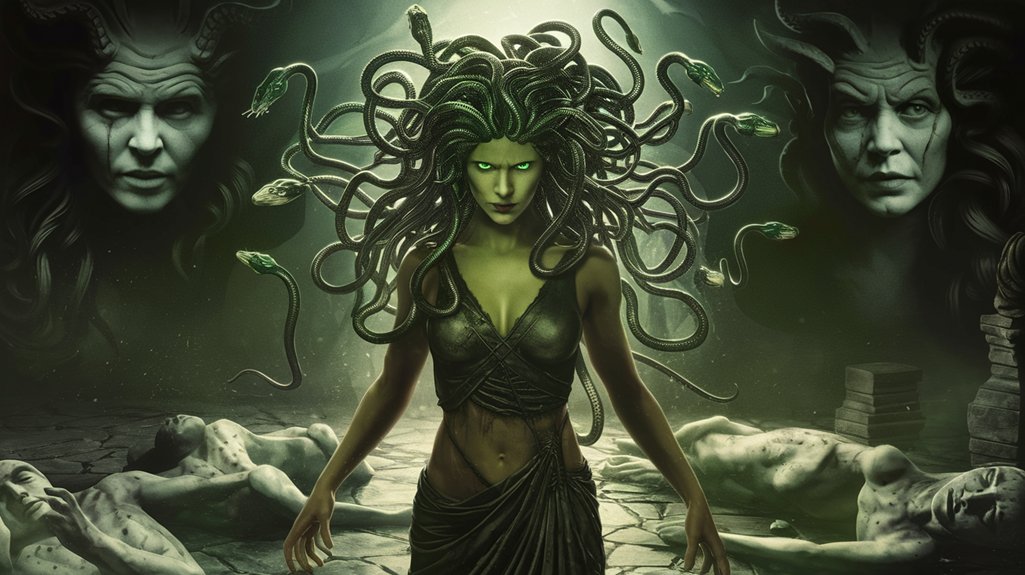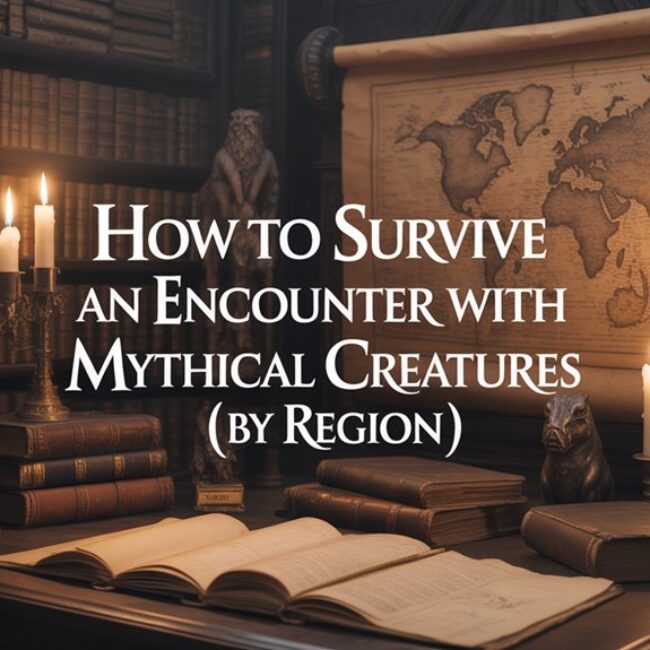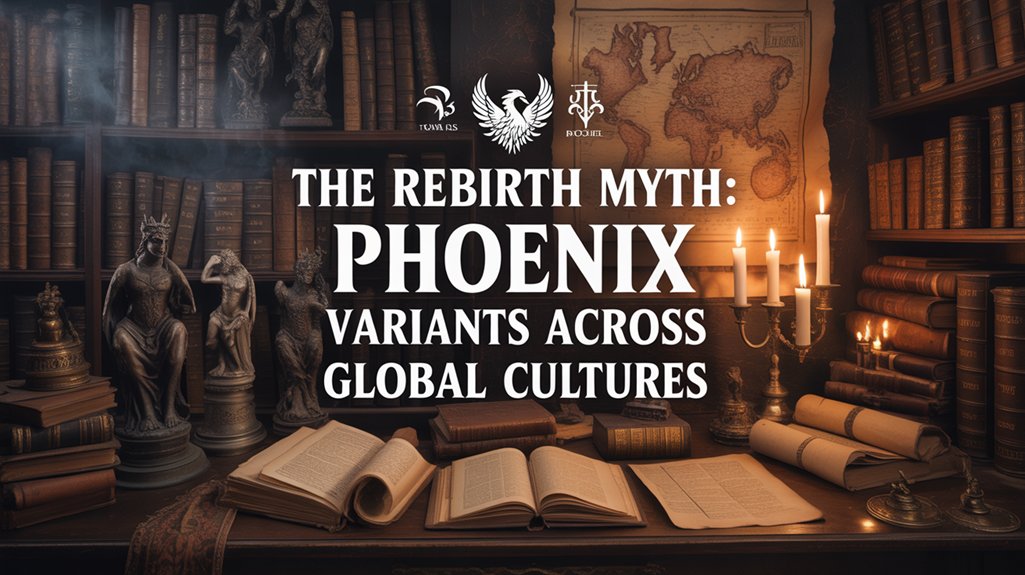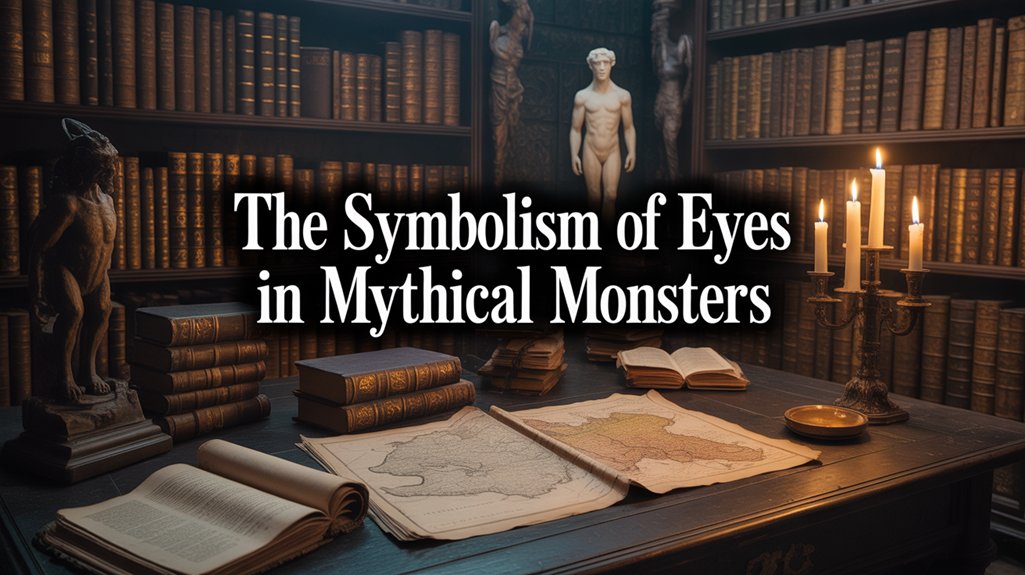
You’ll encounter the Adlet as chimeric beings born from transgression—offspring of an Inuit woman and crimson-furred dog whose forbidden union shattered sacred boundaries between species. Their hybrid anatomy manifests as distinctly human torsos rising above powerful canine legs, bodies built for explosive speed across tundra, marking them as eternal outsiders in Arctic cosmology. These dog-legged people embody consequences of cosmic rupture, their exile across frigid waters establishing foundational narratives that encode survival protocols and territorial wisdom throughout Greenlandic, Labrador, and Alaskan traditions, where they persist as liminal guardians whose genealogical threads acknowledge strange ancestry flowing through human veins.
Table of Contents
Toggle🔮 Enhance Your Practice With These Essentials
Chosen for ritual alignment and energetic correspondence.
🔮 Enhance Your Practice With These Essentials
Chosen for ritual alignment and energetic correspondence.
🎯 Recommended Products
Handpicked items related to this article:
As an Amazon Associate, we earn from qualifying purchases.
🔮 Enhance Your Practice With These Essentials
Chosen for ritual alignment and energetic correspondence.
Key Takeaways
- Adlet are mythological beings from Inuit folklore with human upper bodies and canine lower limbs, born from a woman’s union with a red dog.
- Their creation violated fundamental cultural taboos, resulting in exile and establishing them as eternal outsiders in Inuit cosmology and narratives.
- The Adlet’s hybrid form symbolizes transgression of sacred boundaries, serving as warnings against hubris and disrespect for natural and cultural limits.
- Regional variations exist across Greenland, Labrador, and Alaska, with some linking Adlet to European ancestry or Indigenous mountain-dwelling populations.
- Adlet stories function as teaching tools, encoding survival protocols and reinforcing community obligations through pedagogical narratives in traditional gatherings.
Origins of the Adlet in Inuit Mythology
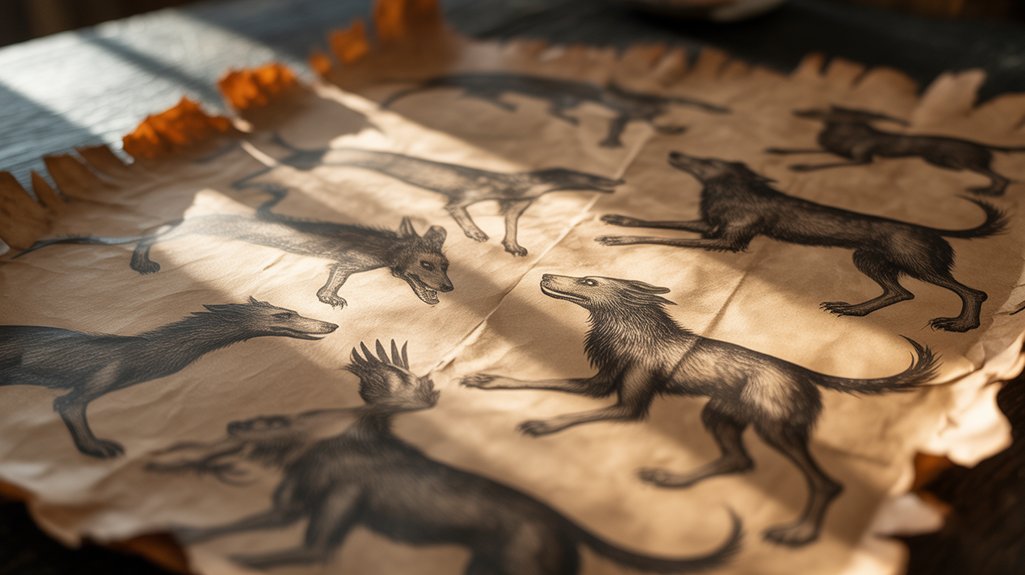
The Adlet emerged from transgression. Boundaries violated.
You can observe cultural parallels in shapeshifter myths worldwide—the cynocephali of ancient Greece, the dog-headed beings in medieval European texts.
Yet the Adlet remain distinctly Arctic, shaped by environments where survival demands respecting nature’s eldritch power. Their existence warns against hubris, against assuming dominion over forces beyond human comprehension.
These creatures embody consequences, standing sentinel at civilization’s edge, reminding you that some boundaries exist for purposes both ancient and immutable.
The Tale of the Woman and the Red Dog
At the heart of Adlet mythology lies a transgressive union between an Inuit woman and a qimmiq—a crimson-furred dog who crossed the threshold from animal companion to forbidden lover, shattering the sacred boundaries between human and beast.
From this eldritch coupling emerged a litter of chimeric offspring, their bodies split between two natures: human torsos crowned with comprehending eyes, yet terminated in canine haunches and swift, padded paws.
These half-dog children, neither fully human nor wholly animal, became the progenitors of the Adlet race, condemned to exist in the liminal spaces where civilization meets wilderness, forever marked by their mother’s transgression and their father’s bestial legacy.
The Forbidden Union Begins
According to ancient Inuit oral traditions preserved across the Arctic archipelago, a young woman of exceptional beauty once defied the most fundamental taboos of her people through an unspeakable act that would rupture the boundary between human and animal domains. She chose isolation over marriage. Her father, angered by persistent rejection of suitors, enacted terrible punishment—he brought forth a red dog as mockery. What began as humiliation evolved into forbidden love, a transgression against cosmic order. The woman and creature formed mythical unions in secret, their eldritch coupling producing chimeric offspring.
| Transgression | Consequence |
|---|---|
| Rejection of human suitors | Paternal curse enacted |
| Union with dog-spirit | Birth of Adlet race |
| Breaking sacred boundaries | Cosmic rupture manifested |
The threshold between worlds shattered irreparably.
Birth of Half-Dog Children
From this profane congress emerged litters—not singular births as human custom dictated, but multiple offspring born simultaneously, their bodies manifesting the rupture between species.
The woman’s belly swelled grotesquely, bearing six pups in her first labor, each one displaying chimeric characteristics that defied conventional birth rituals.
Three possessed canine hindquarters with functional human torsos. Three emerged fully dog.
This hybrid identity marked them as Adlet—creatures whose very existence challenged the cosmological boundaries your ancestors maintained.
The red dog had sired an eldritch lineage, neither wholly beast nor truly human.
No shaman attended these deliveries, no songs welcomed the abominations.
The woman nursed them nonetheless, her maternal instinct transcending revulsion.
Consequently, began the bloodline that would haunt Inuit storytelling for millennia.
Origins of Adlet Race
Though subsequent generations would sanitize these events into cautionary parables, the original tale preserved by coastal settlements speaks of deliberate exile rather than accident.
You’ll find the woman’s union with the red dog wasn’t merely transgressive—it represented an eldritch crossing of boundaries that Arctic communities understood as irreversible. The Adlet genetics emerged from this chimeric founding, creating beings neither wholly canine nor human.
Inuit folklore maintains precise geographic details: the woman birthed her offspring on a remote island, then fashioned a boat from her father’s boot to send the dog-children southward.
This wasn’t abandonment. It was genesis. The Adlet became progenitors of their own nation, carrying forward their dual nature as both blessing and burden across generations.
Physical Characteristics of the Dog-Legged People
You’ll find the Adlet’s form exists as a profound chimeric manifestation—the upper portion distinctly human, bearing torso, arms, and head with recognizable Inuit features, while below the waist their anatomy alters into the powerful, fur-covered legs of dogs, complete with padded paws and clawed digits.
This eldritch division creates beings who move with uncanny grace, neither fully bound to human bipedalism nor constrained by quadrupedal locomotion. Their hybrid structure enabling swift, loping gaits across the Arctic tundra.
The boundary between flesh and fur marks a stark ontological threshold, a visible wound in natural order that ancient storytellers recognized as both curse and evidence to transgressive origins.
Upper Human Body Features
While their lower extremities bear the unmistakable mark of the canine, the Adlet’s upper form presents a startling contrast—thoroughly human in its configuration.
You’ll discover torsos, arms, and heads indistinguishable from those of ordinary Inuit people. The body proportions maintain perfect human symmetry above the waist, creating this chimeric entity of dual nature.
Their faces express emotion. Their hands craft tools. Their voices speak the ancient tongue of their human mother.
Yet something eldritch persists—a wildness behind the eyes that betrays their mixed heritage.
The Adlet’s human features serve as haunting reminders that these creatures emerged from an unholy union, forever suspended between two domains.
Where canine traits dominate below, humanity struggles to maintain dominion above, creating beings who belong fully to neither territory yet embody both completely.
Lower Canine Limb Structure
The canine limbs emerge at the pelvis with shocking anatomical precision, replacing human legs entirely with the digitigrade structure of Arctic dogs. You’ll observe how canine anatomy manifests through powerful haunches, dewclaws vestigial yet present, paw pads thick as sealskin against permafrost. This chimeric alteration represents limb evolution frozen in mythological time.
| Structural Element | Characteristics |
|---|---|
| Joint Configuration | Reverse-articulated hocks |
| Paw Morphology | Four-toed digitigrade stance |
| Fur Density | Double-coat protection |
The Adlet stride across tundra with eldritch grace, neither wholly beast nor human. Their gait speaks to ancient bloodlines, to that primordial moment when woman and dog-spirit merged. You cannot ignore how these limbs enable survival—speed, endurance, adaptation. Freedom incarnate through change.
Distinctive Hybrid Appearance Traits
Crimson-stained accounts from eighteenth-century Greenlandic oral traditions describe the Adlet’s upper torso as disturbingly, magnificently human—shoulders broad enough to draw kayak paddles, arms muscled from traversing ice fields, hands capable of wielding both harpoon and claw.
You’ll find their faces unmistakably shaped by cultural traits of their human ancestry—high cheekbones carved by Arctic winds, eyes reflecting intelligence beyond predatory instinct.
Yet where hip joints should pivot, the chimeric alteration begins. This hybrid appearance manifests completely below the waist: dense fur patterns matching coastal wolves, hindquarters built for explosive speed across tundra, paws designed for both swimming and terrestrial pursuit.
The eldritch junction between human torso and canine legs reveals no gradual shift—just abrupt metamorphosis, as though two beings were severed and fused by supernatural intervention.
The Exile Across the Sea
According to Inuit oral tradition, when the woman discovered her children’s dual nature—part human, part dog—horror and shame compelled her to commit an act of irreversible severance. She placed the Adlet upon a makeshift vessel, casting them beyond the known world’s threshold.
The chimeric offspring drifted eastward across frigid waters, their exile narratives becoming foundational to understanding Inuit cosmology’s darker territories.
These banished beings reached distant shores. Changed by isolation.
The exile wasn’t mere punishment—it represented ontological separation, a severing of kinship bonds that defined community boundaries.
You’ll find within these accounts profound questions about belonging, about who claims space within human circles. The Adlet’s forced migration established them as eternal outsiders, neither fully canine nor human, dwelling in eldritch territories beyond civilization’s protective borders.
Their cultural adaptation to this liminal existence shaped them into something wholly other, creatures whose very existence challenged categorical certainties about identity, kinship, and the permeable boundaries separating human from beast.
Adlet as Ancestors in Creation Stories

Beyond their casting-out lies something unexpected—genealogical threads that bind the Adlet not to marginalization but to genesis itself.
You’ll find these chimeric beings woven into cultural narratives as progenitors, not pariahs. The woman who bore them—sometimes called Niviarsiang in certain retellings—becomes the mother of nations through her union with the crimson dog-spirit. Her half-human children dispersed across frozen waters, carrying mythical ancestry to distant shores.
Some traditions position the Adlet as forebears of European peoples, those who sailed beyond Inuit ken. A bold cosmological claim.
Others trace Indigenous lineages back to these eldritch figures, acknowledging dog-blood flowing through human veins without shame.
This isn’t mere storytelling—it’s ontological mapping. The Adlet transcend monstrosity to become foundational, their hybridity explaining difference itself.
You’re witnessing creation myths that refuse simple categories, embracing the liminal as sacred origin. Freedom dwells in such fluidity, where ancestry acknowledges its strange, animal roots.
Regional Variations of the Legend
Across the circumpolar expanse where Inuit cultures flourished—from Greenland’s ice-capped fjords to Alaska’s wind-scoured coasts—the Adlet narrative fractures into distinct regional expressions, each territory altering the dog-children according to local cosmology.
You’ll discover these myth variations aren’t mere retellings but autonomous manifestations of ancestral wisdom.
Regional adaptations manifest distinctly:
- Greenlandic traditions depict the Adlet as proto-European ancestors, their chimeric forms explaining perceived differences between Kalaallit peoples and Norse settlers who arrived circa 985 CE.
- Labrador accounts emphasize the creatures’ exile to interior mountains, where their eldritch howls still echo through spruce forests.
- Alaskan variants occasionally merge Adlet characteristics with coastal alteration narratives, blending canine and marine attributes.
Each community shaped these beings through environmental pressures and cultural encounters.
The dog-legged ones adapted. Changed. Reflected back what each people needed to understand about themselves, about outsiders, about the boundaries between human and other.
Symbolism of Human-Animal Hybrids in Arctic Culture
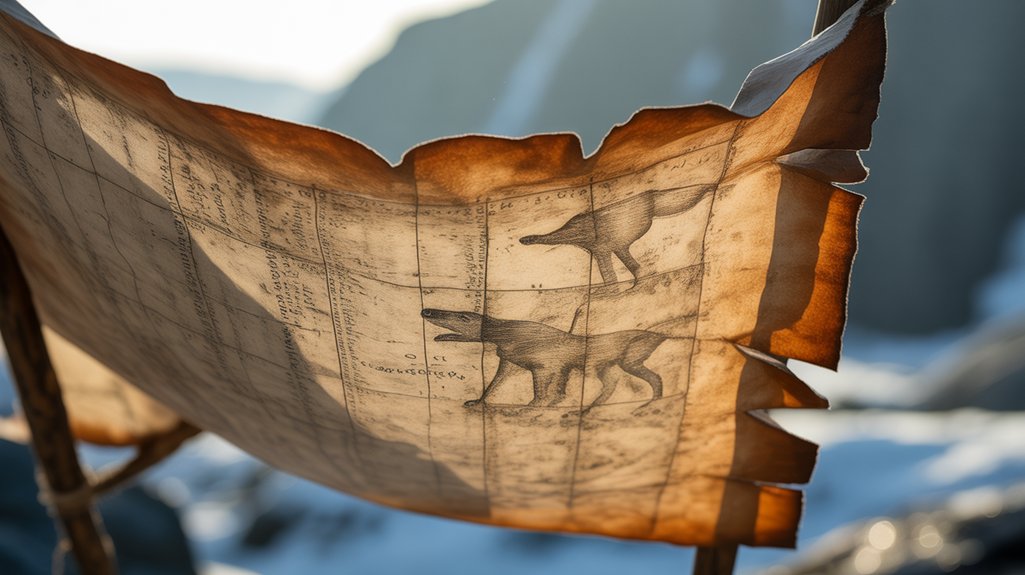
These regional permutations of the Adlet legend reveal a broader pattern threaded throughout Arctic cosmology—the persistent presence of beings who exist between taxonomic certainties, creatures who challenge the membrane separating human consciousness from animal instinct.
You’ll find hybrid symbolism operates as spiritual cartography within Inuit thought. The chimeric form doesn’t signify monstrosity but rather alteration’s sacred potential—freedom from fixed identity.
| Hybrid Type | Cultural Significance | Represented Threshold |
|---|---|---|
| Adlet | Kinship boundaries | Human/Animal |
| Qallupilluit | Environmental respect | Land/Sea |
| Mahaha | Psychological states | Sanity/Madness |
| Tariaksuq | Shamanic power | Mortal/Spirit |
These eldritch beings embody liminal wisdom. The Adlet specifically emerge from transgressive union, marking genealogical anxiety about cultural purity versus adaptive survival. Their dog-legs don’t merely disfigure—they grant velocity, predatory advantage. You witness here ancient recognition that boundaries restrict, that synthesis creates resilience. Arctic peoples understood alteration as liberation rather than curse.
The Adlet’s Role in Traditional Storytelling
When elders gathered within the qaggiq—the ceremonial snow house—during the Arctic’s four-month night, Adlet narratives functioned as pedagogical architecture, transmitting survival knowledge through monster metaphor.
These traditional narratives warned against three fundamental transgressions:
- Isolation from community—the chimeric Adlet embodied what happens when kinship bonds fracture
- Hybridization anxieties—their eldritch form represented cultural boundaries that demand respect
- Territorial violation—they patrolled liminal spaces between human settlements and wilderness
You’ll find cultural symbolism embedded within each telling, where the dog-legged creatures served as mnemonic devices for traversing both physical landscapes and social obligations.
The Adlet weren’t merely entertainment. They encoded survival protocols within their horrific forms, teaching children which behaviors invited catastrophe, which paths led to starvation, which choices severed one from protective community structures.
Through repetition across generations, these stories became cognitive maps—supernatural guardians enforcing boundaries that kept families alive through brutal seasons.
Comparing Adlet to Other Mythological Creatures
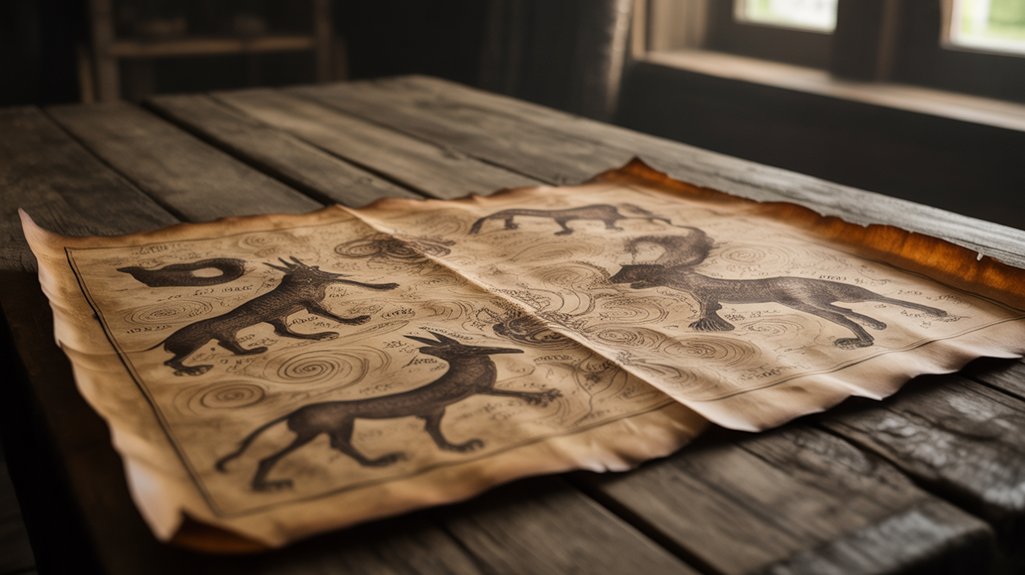
The Adlet’s particular morphology—human torso grafted onto canine extremities—finds cognates across disparate mythological traditions, revealing how cultures separated by oceans and millennia independently manifested similar chimeric anxieties.
You’ll recognize parallels in Greek cyncocephali, dog-headed warriors haunting Herodotus’s fifth-century accounts. Egyptian Anubis bridges mortality’s threshold with jackal countenance. Japan’s inugami—vengeful canine spirits possessing human hosts—echo this duality.
These adlet comparisons illuminate universal tensions between civilization and wildness. Hybrid mythology consistently positions such beings at boundaries: geographic, spiritual, psychological.
The Adlet guards Arctic territories; werewolves patrol European forests; Filipino aswang alters at village perimeters. Each culture coded its particular fears into flesh, creating liminal guardians that embodied what you’d surrender when crossing into unknown territories.
Such creatures weren’t mere monsters. They represented change’s price—the eldritch knowledge that humanity’s edges remain permeable, that wildness persists within civilized bodies, awaiting release.
Cultural Significance and Modern Interpretations
Inuit oral traditions preserved the Adlet narrative through generations not as entertainment but as ontological instruction—teachings that mapped social boundaries, kinship obligations, and the consequences of transgressing cultural taboos.
These chimeric beings embodied profound cultural reflections about hybrid identity, the dangers of unchecked desire, and humanity’s relationship with the animal world.
Contemporary scholars recognize the Adlet’s enduring relevance:
- Indigenous sovereignty movements reclaim these narratives as decolonized knowledge systems
- Graphic novels and speculative fiction explore the eldritch dimensions of human-animal metamorphosis
- Anthropological frameworks examine how such myths regulated exogamous marriage practices
Modern adaptations haven’t diminished the tale’s power.
You’ll find the Adlet resonating through Arctic communities where traditional wisdom still instructs.
The dog-legged people persist—liminal guardians reminding us that transgression births monsters, that boundaries matter, that ancient warnings echo across centuries with undiminished force.
Frequently Asked Questions
Are There Any Archaeological Findings Related to the Adlet Legend?
You’ll find no direct archaeological evidence linking physical remains to the Adlet themselves—these chimeric beings exist in oral tradition’s eldritch domain.
However, ancient Inuit settlement sites across the Arctic reveal the cultural significance of human-canine relationships: dog sledding tools, ceremonial burials featuring dogs alongside humans, carved figurines depicting change.
These artifacts illuminate why such legends emerged, reflecting the profound spiritual bond between your ancestors and their wolf-descendants in those liminal, frozen territories where survival demanded mythic understanding.
How Do Contemporary Inuit Communities View the Adlet Stories Today?
You’ll find contemporary Inuit communities preserve Adlet narratives as living heritage, not mere folklore.
These chimeric tales hold profound cultural significance—teaching boundaries, respect for the eldritch unknown.
Modern interpretations vary: some elders maintain traditional warnings about these dog-legged beings; younger generations reclaim them through art, literature.
The stories aren’t dismissed but altered, coincidentally resurging as communities assert sovereignty over their narratives.
You’re witnessing mythology’s power—how ancient wisdom adapts, breathes, refuses extinction in liminal spaces between worlds.
Were Adlet Considered Dangerous or Friendly to Humans in the Myths?
You’ll find the Adlet occupy ambiguous territory in Inuit cosmology. These chimeric beings weren’t bound to simple categorizations—dangerous myths predominate, depicting them as predatory hunters stalking human prey across Arctic wastes.
Yet rare accounts preserve friendly encounters, moments when dog-legged peoples and humans coexisted peacefully. The tradition acknowledges their eldritch duality: neither wholly monstrous nor benevolent, but liminal creatures reflecting the untamed wilderness itself.
Their threat depended on circumstance, territory, and the unpredictable nature of boundary-crossing beings.
Did Different Inuit Groups Have Different Names for the Adlet?
You’ll discover fascinating linguistic diversity across Arctic territories—over twelve distinct Inuit dialects preserve their own terms for these chimeric beings.
While “adlet” dominates Greenlandic and Eastern Canadian traditions, the Labrador Inuit called them “erqigdlit.”
Western groups employed “adlak” or regional variations, each name carrying subtle distinctions in meaning.
This dialectical freedom reflects how autonomous communities shaped their own relationships with the eldritch, dog-legged entities.
Each term represents sovereign cultural interpretation, untethered from colonial standardization.
Are There Any Rituals or Ceremonies Associated With Adlet Legends?
You’ll find scarce documented evidence of specific adlet rituals in surviving oral traditions.
The ceremonial significance lies primarily in cautionary storytelling—elders wielding these chimeric narratives as warnings against transgressing kinship boundaries. These accounts served apotropaic functions, warding communities from forbidden unions.
The adlet’s liminal existence between human and canine domains demanded acknowledgment through verbal transmission rather than formalized rites.
Your freedom to explore these mysteries confronts anthropological silence, fragments preserved in scattered Inuit testimonies collected during early twentieth-century Arctic expeditions.
Conclusion
You’ve journeyed through the liminal spaces where human meets beast, where the adlet—those chimeric offspring of woman and red dog—prowl the edges of Inuit cosmology. These dog-legged people aren’t mere folklore. They’re ancestral memory crystallized, embodying the Arctic’s harsh truth: survival demands change. When you encounter them in stories whispered across frozen tundra, you’re touching something profoundly eldritch—humanity’s eternal negotiation with wildness itself. They endure, watching.




